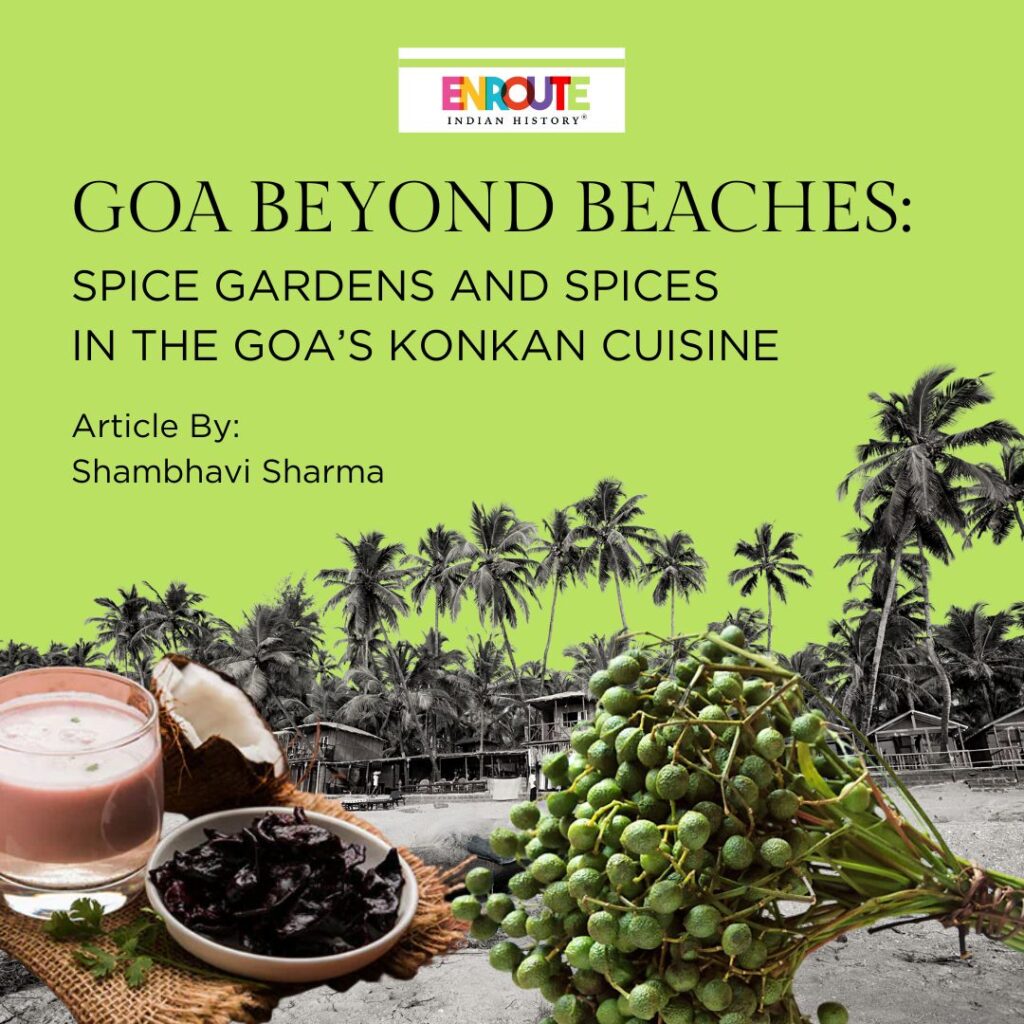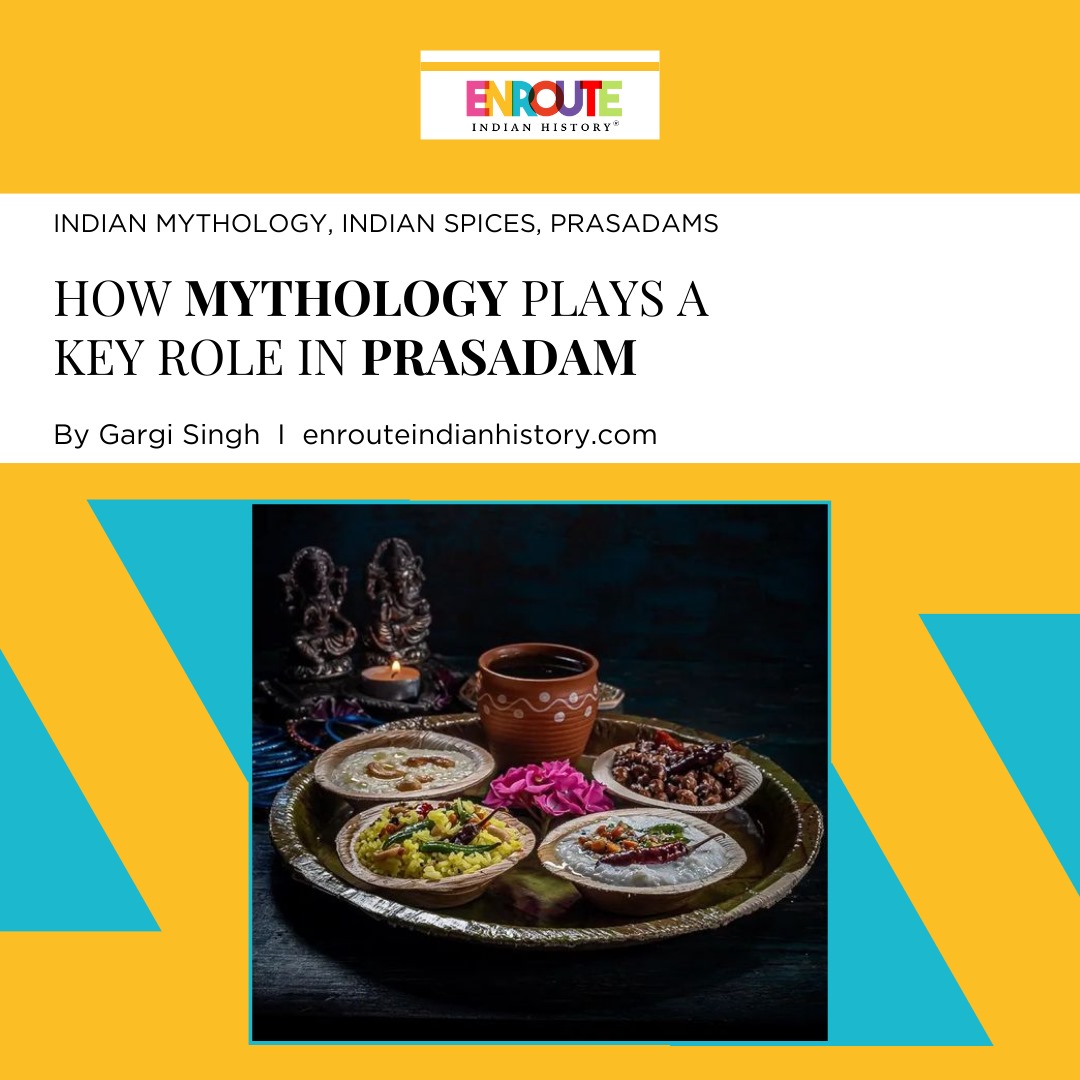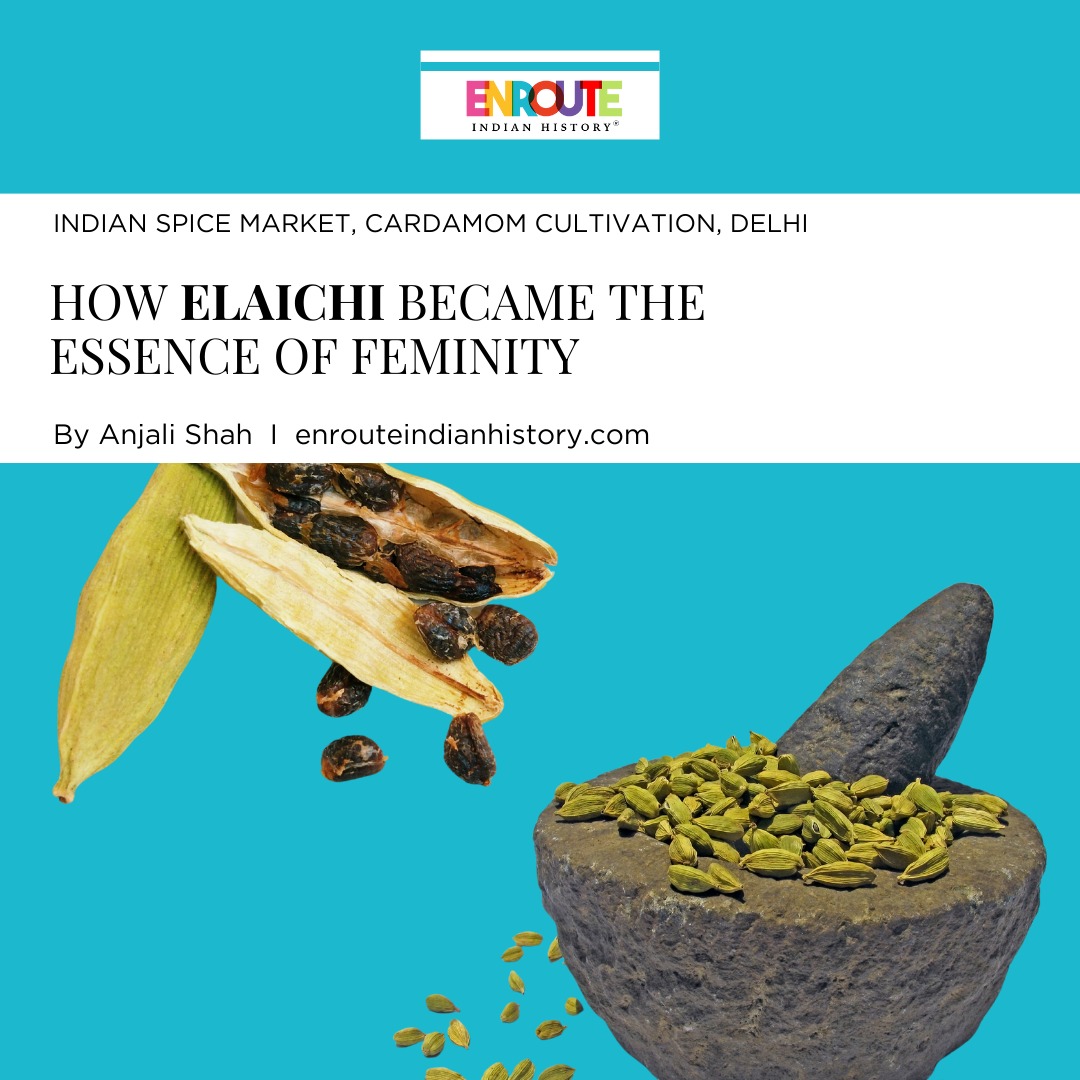
Goa, often referred to as the “Pearl of the Orient,” is a tropical paradise nestled along the western coast of India. This enchanting coastal state is a land of diverse and captivating beauty that seamlessly blends a rich history, vibrant culture, and breathtaking natural landscapes. Goa’s tropical climate nurtures a vibrant ecosystem, where exotic flora and fauna thrive in harmony, sun-kissed beaches adorned with golden sands that stretch as far as the eye can see. The Western Ghats, a UNESCO World Heritage Site, provide a lush backdrop for adventure seekers and nature enthusiasts, offering trekking trails, waterfalls, and wildlife sanctuaries. Beyond the Beaches and the bustling hippie and tourist spots, Goa has much more to offer.The Spice Garden allow a unique travel experience to the visitors and give them a chance to experience Goa beyond the beaches.

(Goa, Nejdet Duzen, Shutterstock)
Goans are renowned for their warm hospitality and zest for life. The culture is a captivating blend of Konkani traditions. Culinary delights in Goa are a celebration of flavors. Fresh seafood, aromatic spices, and a fusion of Indian and Portuguese influences create a unique gastronomic experience. The Spices found in the Konkan region of India are an essential part of the cuisine of Goa.

(Unknown, Goa, Portuguese Atlas, 1630.)
Albuquerque, a Portuguese general, took Goa from the Sultan of Bijapur in 1510 CE. Novel foods like potatoes, chiles, tomatoes, cashews, pineapple, bread, vinegar, and many sorts of meats were introduced to the area. Due to the area’s natural splendor and riches, Goa earned the nickname “Goa Dourada” or Golden Goa. Its prosperous ports allowed for easy trade with the West in goods like Chinese silk and asafoetida.

(Joannes van Doetecum’s engraving of “The Market of Goa” in Jan Huygen van Linschoten’s Itinerario, 1596.)
Goan cuisine was one of the long-lasting effects of the Portuguese. Their eating patterns altered. The upper and middle classes started to love eating beef and pork as part of their diet. In addition to introducing some of their own eating customs, the Portuguese also brought with them Chinese eating customs from Macau and Malacca. The Portuguese brought several spices to India during their colonial period, contributing to the rich tapestry of Indian cuisine. Some of the spices that the Portuguese introduced to India include- Nutmeg: “Noz-moscada” in Portuguese, nutmeg was another spice that became a part of Indian cuisine, and Anise Seed: Known as “erva doce” in Portuguese, anise seed is used for its licorice-like flavor. Most importantly, The Portuguese introduced chili, a South American native, to the Malabar Coast. It claimed that at least three varieties of chili were growing in Goa about 30 years after Vasco de Gama’s arrival in India. It had the moniker “Pernambuco Pepper,” which suggested that it had most likely been brought in from Brazil.

(W.H. Hodge )
The spice trade between India and Portugal, along with other European countries, was a vital aspect of historical global trade routes, known as the “Spice Trade”
These spices combined with the native spices of India and the Konkan region with the liberal use of coconut, contribute to the unique and diverse flavors of Goan cuisine. The cuisine is known for its balance of sweet, sour, spicy, and savory elements, making it a delightful culinary experience, some spices of Goan spices include:
Kokum: A common souring ingredient in Goan cuisine is kokum. The use of kokum in Goan cuisine is a result of the region’s indigenous population. Kokum is a fruit that is indigenous to the Western Ghats and is used to balance the sweetness of coconut milk with its acidic tang. Kokum is commonly used in Goan fish curries, as well as being a significant ingredient in the delicious drink sol kadhi, which is made with coconut milk, kokum, and spices. The drink is a local favorite in Goa and is perfect for sweltering summer days.
Tamarind: Tamarind is another souring agent used in Goan cooking. It imparts a distinct tartness to curries and chutneys.
Asafoetida: Asafoetida, known as “hing” in Hindi, is used as a spice and flavor enhancer in Goan dishes. It has a pungent aroma and is often added to tempering.
Fenugreek: Fenugreek seeds and leaves are used to add a subtle bitterness and nuttiness to Goan curries.
Mustard Seeds: Mustard seeds, especially black mustard seeds, are commonly used for tempering and adding mild heat to Goan recipes.
Teppal: Nearly every third home in rural Goa has a tall, prickly teppal tree in the backyard. One tree provides enough Teppals for numerous families because just a few berries are required to meet a family’s year-round needs. In August and September, the green berries, often referred to as triphal, are gathered and dried in the shade until they burst open. The pods are subsequently kept, and the seed is thrown away. In the majority of vegetarian and non-vegetarian cuisines, teppal is added when the dish is about to finish cooking, either whole or roughly ground. It’s crucial to let the food sit for at least 30 minutes. As a result, the spice has time to develop its own flavor.

(Sichuan Pepper Or Tirphal by Maria April 3, 2016 )
To experience spice on a vacation in Goa, visit one of the many “Spice Gardens”. These plantations offer not just an educational but also a gastronomical experience.
Upon arrival at a spice garden, one is warmly greeted by a guide, often a local expert with extensive knowledge of spices. The tour typically begins with a welcome Kokum drink, and brief orientation, providing you with an overview of what to expect during the tour. The tour takes you through meticulously maintained spice garden where you can observe a wide variety of spice plants, herbs, and tropical flora. Guides share detailed information about each spice’s botanical features, growth patterns, and cultivation techniques. One can see everything from aromatic cinnamon trees with their distinctive bark to fragrant cardamom pods hanging from the bushes. Spice garden tours are highly interactive. Guides encourage you to touch, smell and even taste the spices. Guides share fascinating stories about the historical, cultural, and medicinal significance of each spice. insights into how these spices have been used in traditional Goan cooking, Ayurvedic medicine, and even in religious rituals are discussed. Depending on the spice garden, one might have the opportunity to attend cooking demonstrations. Experienced chefs showcase how these spices are incorporated into Goan recipes. One may even get to taste the dishes prepared during the demonstration in a buffet.
A spice garden tour in Goa is a multi-sensory journey that offers not only a deeper understanding of spices but also an appreciation of the cultural and culinary heritage of the region. It’s an immersive experience that engages all your senses and leaves you with a newfound appreciation for the world of spices.
Some renowned Spice Gardens of Goa:
One of the oldest spice plantations in Goa is the two-hundred-year-old Savoi Spice Plantation, a family-owned plantation that spans 100 acres. This plantation, which is owned by the Shetye family and is situated in the Savoi village of Ponda, provides the best hospitality to its guests. The group gives visitors fresh pomegranate juice and cardamom bananas while guiding a rigorous and thorough tour of the land. The owners are dedicated to upholding the “organic since origin” designation.
The Tropical Spice Plantation is one of Goa’s most beautiful and pristine locations. Due to its proximity to Verdant Land, the plantation is the one that is most in tune with nature. The plantation owners made an effort to maintain the plantation’s traditional ways without harming the environment or lowering the quality of the spices. There are many tropical plants to be found there, including cashews, betel nuts, palms, papayas, star fruit, a variety of citrus fruits, and much more. There is a separate bird sanctuary available where you can spend a few minutes watching birds without being bothered by monkeys. The best Goan cuisine is then served in a restaurant outdoors.
The Sahakari Spice Garden plantation is renowned for both its hospitality and its production. Gifts and refreshments are offered to you along with a warm greeting. Nutmeg, turmeric, and cardamom aromas fill the air as you are escorted inside. Trees that produce guava, pineapple, papaya, and jackfruit offer shade. To make the trip even more enjoyable and unforgettable, One can participate in folk dances and elephant rides.

(Goan Cuisine by Ritz Classic)
- B. Borkar, a Goan poet and writer says, ”The virility and vitality of this quiet, soft-mannered and peace-loving society’s culture were tested and proved beyond doubt when in the sixteenth century the Portuguese conquerors of Goa tried fanatically to uproot it completely. Though partially impaired under the onslaught of superior arms and administrative machinery, it not only outlived it but even absorbed some good and progressive features of their Latin culture” In Goa, time seems to slow down, inviting you to embrace a leisurely pace of life. Goa’s allure lies not just in its picturesque landscapes, but in the sense of serenity, adventure, and and its spice-infused cuisines. Goa offers to every traveler fortunate enough to explore its wonders.
REFERENCES:
- Silva Gratias da, Fatima. (1977). The Impact of Portuguese Culture in Goa: A Myth or Reality. In: Borges, Charles J. (ed.), Goa and Portugal. Their cultural Links. Retrieved October 7, 2023, from https://www.songs-from-goa.at/images/doks/silva_gratias_da_fatima_impact_of_portuguese_culture_in_goa.pdf
- Rodriguez, G., & Brebbia, C. (2015, September 15). Coastal Cities and their Sustainable Future. WIT Press.
- Dasgupta, R. R. (2008, April 2). Goa and its cuisine. The Economic Times. https://economictimes.indiatimes.com/magazines/travel/goa-and-its-cuisine/articleshow/2921086.cms
- Goan Cuisine: A Confluence of Cultures. (n.d.). INDIAN CULTURE. https://www.indianculture.gov.in/food-and-culture/west/goan-cuisine-confluence-cultures#:~:text=The%20unique%20cuisine%20of%20Goa,%2C%20Malabari%2C%20Malaysian%20and%20Chinese.
- Coelho-Costa, Ewerton Reubens Spices and Tourism: Destinations, Attractions, and Cuisines Rosa dos Ventos, vol. 8, núm. 1, 2016 Universidade de Caxias do Sul, Brasil Disponível em: https://www.redalyc.org/articulo.oa?id=473550284011 DOI: https://doi.org/ http://dx.doi.org/10.18226/21789061.v8e008
- Coelho-Costa, Ewerton Reubens Spices and Tourism: Destinations, Attractions, and Cuisines Rosa dos Ventos, vol. 8, núm. 1, 2016 Universidade de Caxias do Sul, Brasil Disponível em: https://www.redalyc.org/articulo.oa?id=473550284011 DOI: https://doi.org/ http://dx.doi.org/10.18226/21789061.v8e008
- https://nri.goa.gov.in/spice-plantations/


























